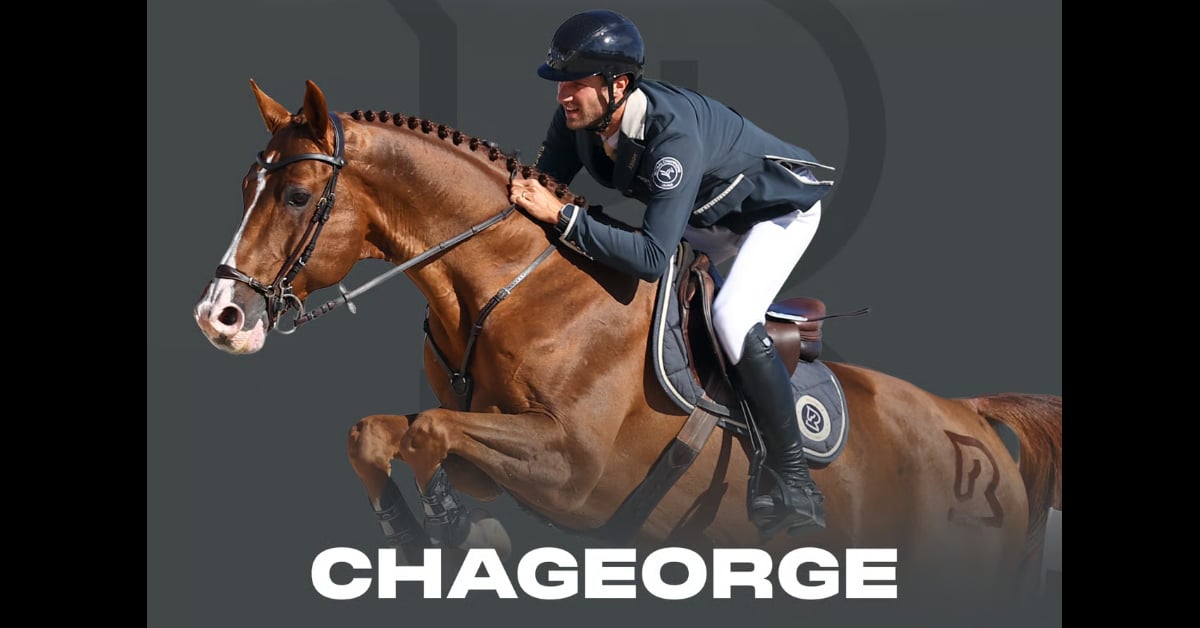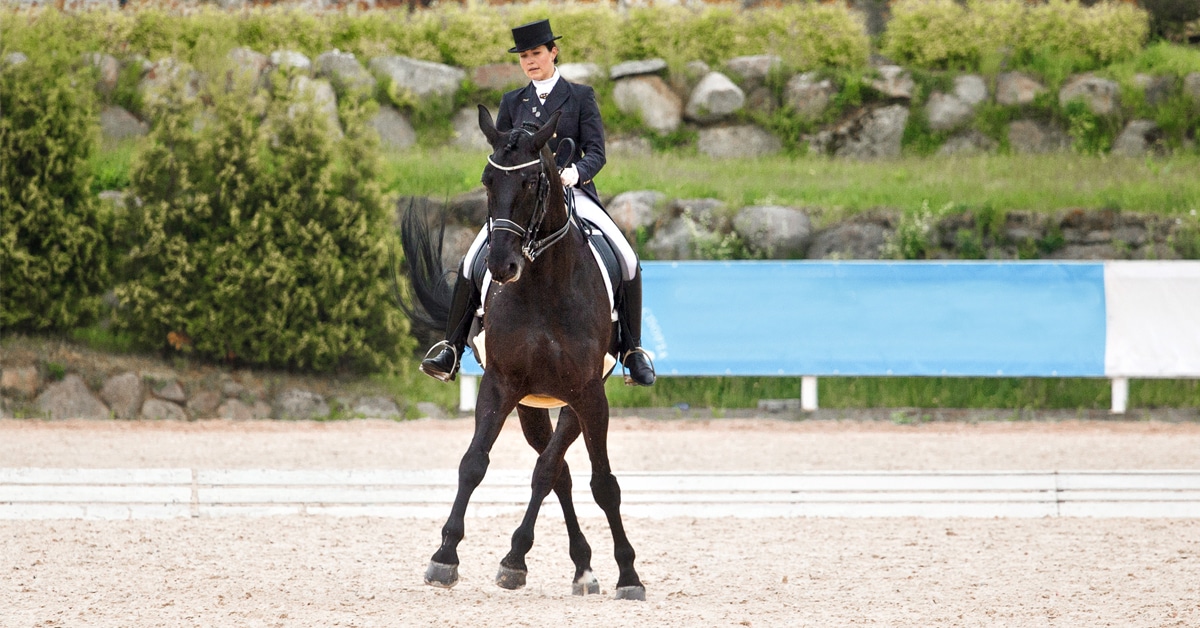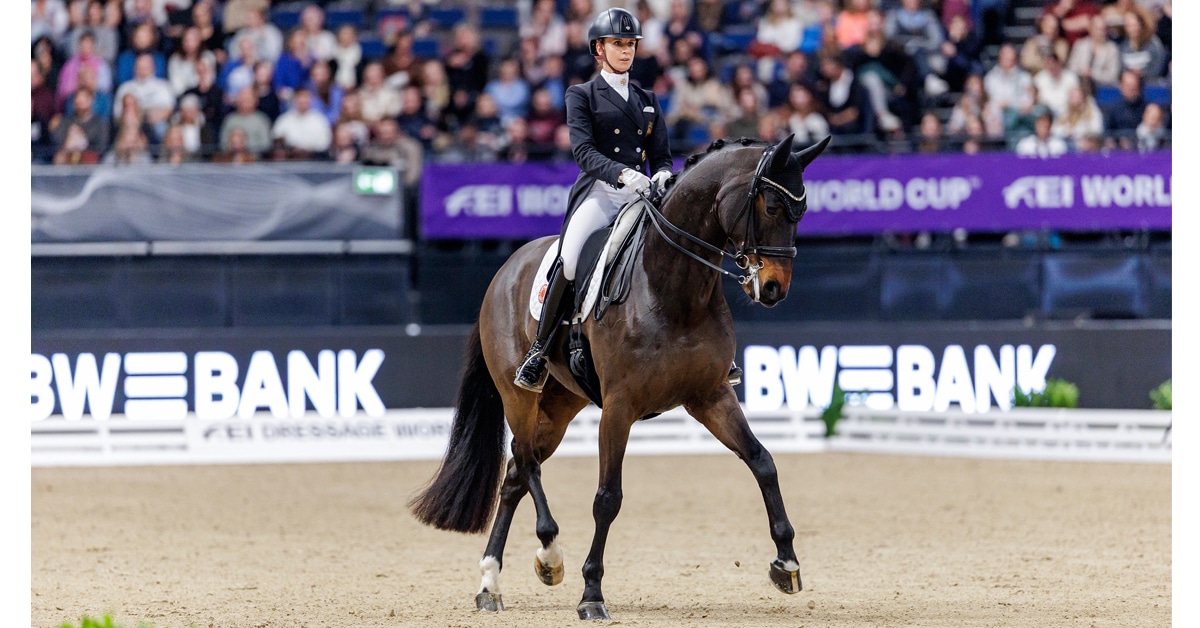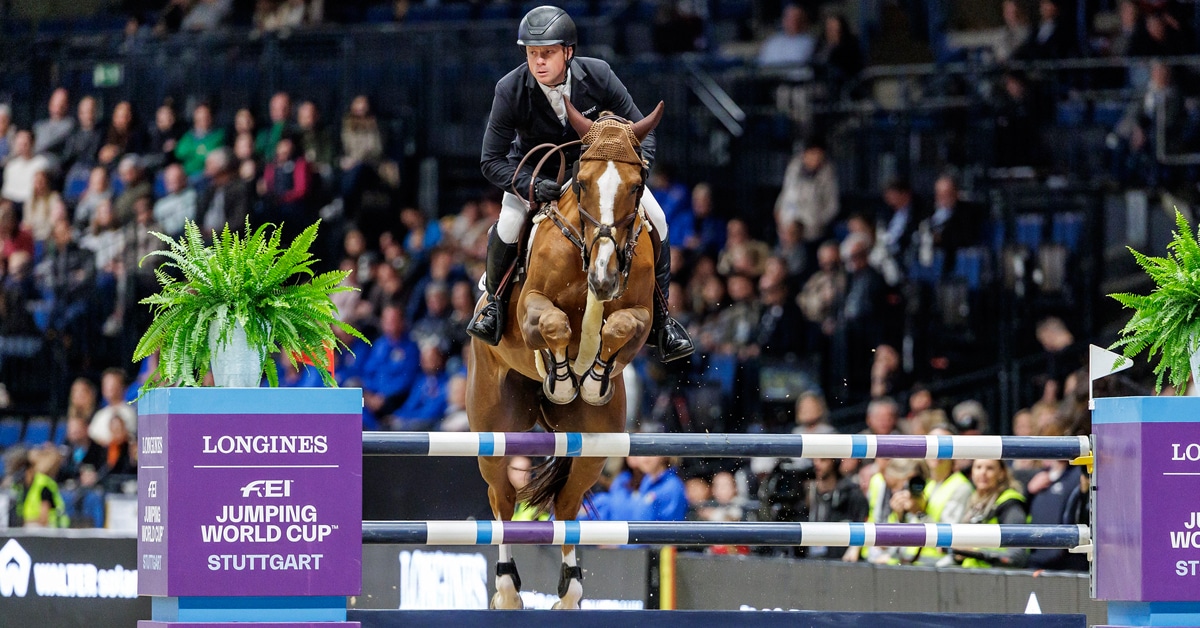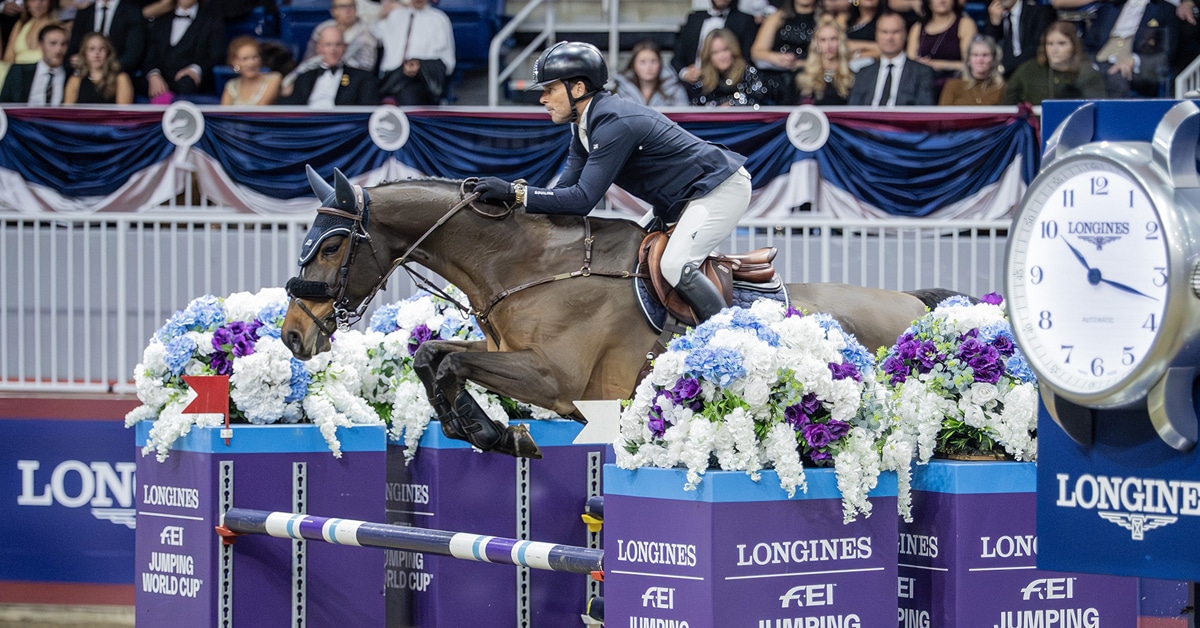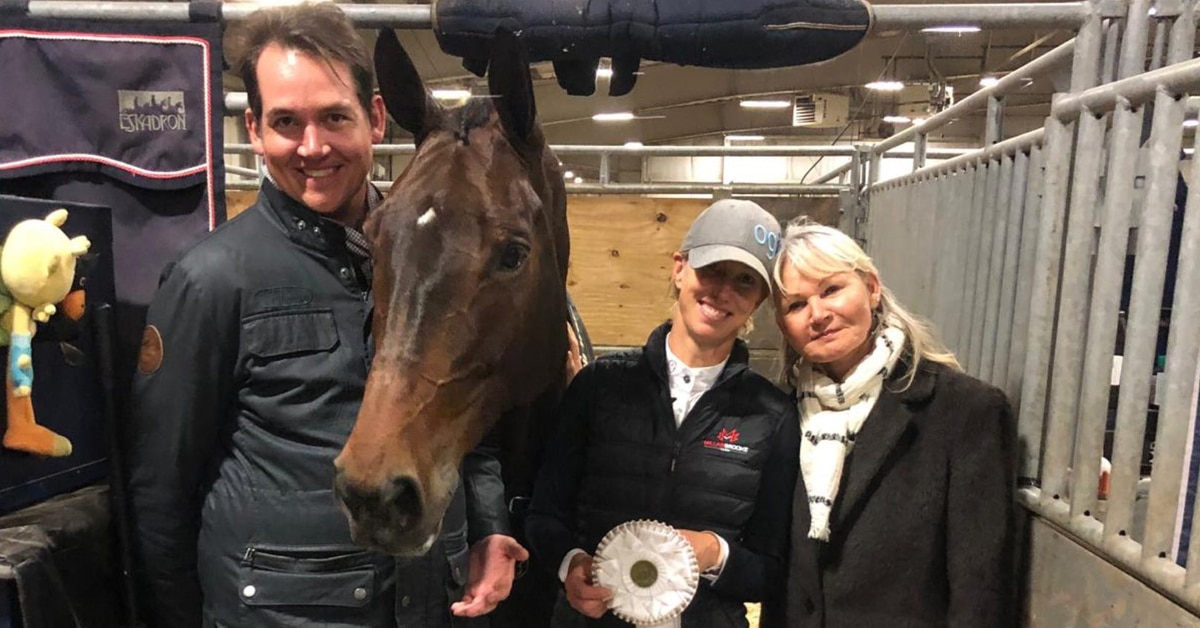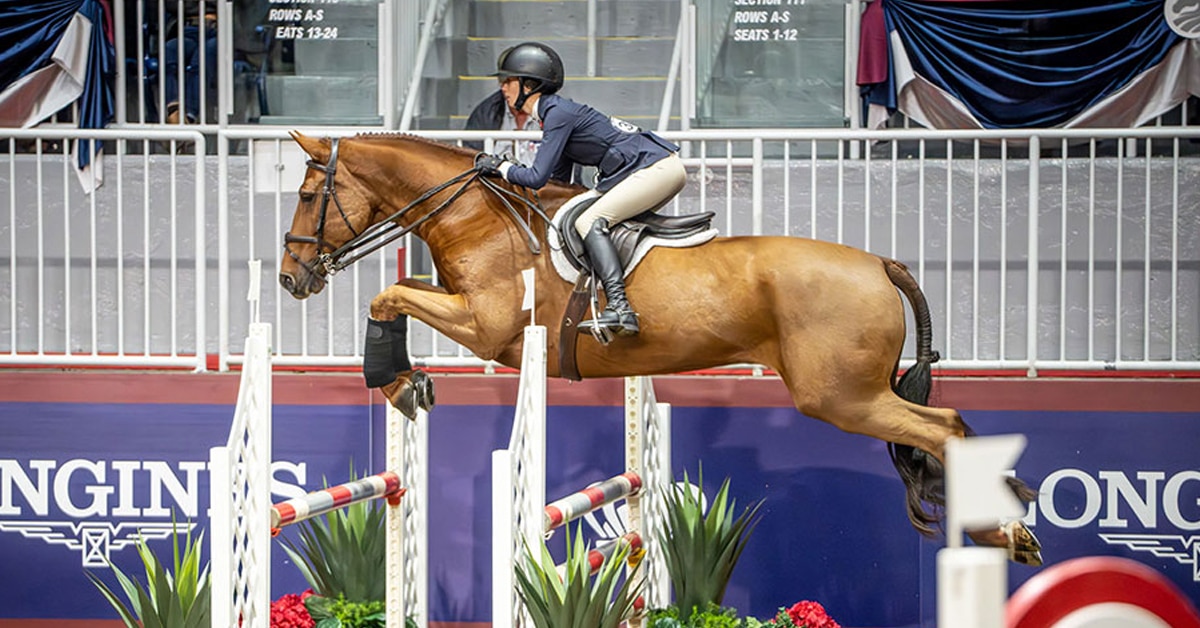The 2019 Equestrian Canada Convention opened with a special presentation by EC president, Meg Krueger, in which she revealed the EC Strategic Initiatives Plan 2019 Report Card. The organization created the report based on survey results collected in July 2019, and hopes to use the findings as a guide to developing an industry we can be proud of.
The full report will be available next month. Until then, you can review six of the most talked about initiatives below. Also, you can refer to the 2018 EC Report Card issued by Horse Sport here.
Message from the EC President
After thoughtful consideration and analysis of issues which are important to the stakeholders of Equestrian Canada (EC), the Strategic Initiatives Plan 2018-2022 (SIP) was released in September 2018.
As the purpose of the SIP is to set the direction of EC for the next five years, it is the guide for our operational plans and organizational structure. It is a roadmap that leads us forward in defining how our equestrian landscape will look in five years.
In this Report Card you will see a “Snapshot” of the top six initiatives generating the most feedback from respondents of the recent SIP survey process. The full Report Card detailing each of the 19 initiatives in the SIP will be available online in December 2019. This year also marks the first of four annual Report Cards over the term of the SIP which will help us monitor our progress and adjust to changing priorities in our equestrian landscape.
The comprehensive SIP survey process received over 8,300 cells of information and responses from you – our participants, governance and operational committees, Provincial and Territorial Sport Organization (PTSO) Executive Directors, EC staff, and Voting Members of Categories A, B and C.
The “Snapshot” shows the Board’s self-assessment of where the organization is today, as well as some of the most frequently discussed opinions regarding these initiatives. Through this year’s review and the resulting Report Card, we confirm EC has progressed in some essential areas, but that there is still much room for improvement.
Whereas 2018-2019 was a time of planning and preparing for change, today we move forward in implementing an innovative re-organization that incorporates a continuous improvement philosophy, and new processes and strategies that will help us achieve our goals of equestrian, strategic and organizational excellence.
Sincerely,
Meg Krueger
President
Equestrian Canada
REPORT ON COACHING DEVELOPMENT
•Increased number of certified coaches and instructors who meet NCCP requirements.
• Nation-wide implementation of the Respect in Sport Program and other Safe Sport initiatives.
KEY SUMMARY
A majority of respondents feel certification is essential in expanding our sport credibility, and securing the confidence of parents putting their children into equestrian sports. Equestrian sport has lagged behind our national sport community in the implementation of coaching standards.
The EC Board of Directors has committed to a vision of every coach licensed and certified by 2025. The introduction of coach licensing in 2020 is the first step in this process and provides the framework to encourage more coaches to complete and maintain NCCP certification while also recognizing other quality programs.
EC recognizes the importance of introducing standards, but also the need to phase them in, in order to be achieved in a progressive manner.
In 2019, EC has revised Safe Sport policies and retained third party complaint management.
Platform investment and eLearning partnership has provided infrastructure to deliver and track training in an efficient manner and enabled EC to develop sport-specific respect and concussion training modules which have been made required elements of the Coach Licence for 2020 and will be promoted to all sport participants.
We are sensitive to the concerns of implementation and will be using 2020 to define processes that will work for competition organizers, coaches, athletes and parents.
With the system of coach licensing established, EC will be able to direct more attention to the re-development of training and certification programs.
COMMUNITY FEEDBACK SNAPSHOT
“You have to be licensed to cut hair, surely we can get some certification in place to teach riding and keep beginners safe.”
“These are very important initiatives and should continue as a high priority for EC. Both are important for ongoing development of interest in the sport, particularly for youngsters and parents who pay for coaching and instruction.”
“Yes increased NCCP qualified coaches/instructors is very important even if it means grandfathering some who are non- certified at present.”
“I cannot imagine why a coach would not be certified. Or why someone would choose to ride with such a coach. Coaching certification should be made mandatory/ attainable/affordable for coaches. Every effort must be made to allow certified coaches from other countries to challenge the levels when warranted.”
“Very important initiative. Respectful coaching practices are the best way to ensure that future generations continue this sport. There is a strong need for coaches who understand mental health conditions as well as concussions in this sport. Too many lower level coaches do not have the skills and expertise to appropriately manage athletes with these issues.”
“Somewhat important. I do not believe increasing the number of coaches will increase participation. You need to truly implement and follow through with initiatives. Sadly, EC takes initiatives but does not follow through with such. All talk and no action, very unorganized at the top.”
“Re: Safe Sport. This is important, however be very cautious about the language you use. When you start framing, ‘Riders being pushed beyond their comfort level’ as an inappropriate action, you put all of your coaches at risk of being challenged.”
REPORT ON HIGH PERFORMANCE DEVELOPMENT
• Through data analytics of performance, EC identifies high performance athletes and assesses needs for the further development of programs for Rising Stars, national athletes and our international competitors.
• Through the continual and consistent development of our High Performance Strategy, Canada will maintain and increase world-class performance and results.
KEY SUMMARY
A majority of respondents are looking for a clear, consistent, transparent pathway for athletes to know the steps they need to take in our sport system.
Many respondents feel high performance athletes need to be developed within a strong system and a plan for additional financial support must be in place to develop those who do not have financial means.
The EC Board of Directors has approved a re-organization which will align with EC’s Strategic Initiatives Plan and includes significant improvements to the delivery of High Performance.
Key resources will be dedicated for sport development and high performance to optimize impact on national and international results trends.
Development of a five-year cycle for sport system stakeholders will align with expected performance outcomes and build future assets.
Realignment in high performance with targeted expertise, performance planning, coaching effectiveness and performance analysis will foster better cohesion and optimize efficiency.
In keeping with the PTSO Provincial and Territorial Sport Organization (PTSO) Memorandum of Agreement, EC has started developing the framework for certifying High Performance Coaches – it is part of the NCCP revision.
COMMUNITY FEEDBACK SNAPSHOT
“This is an important initiative. We need to have a transparent, consistent development system in place so that young riders and young horse owners can look and find the steps that they must take to move up the ladder. And the selection process needs to be clear and not secret. Data analytics helps with that for sure.”
“Development and support of our elite athletes is very important. These people set the standards, raise the public awareness, and motivate new, young participants in the sport.”
“Direct, meaningful support and programs need to be in place to help the current high performance riders and to assist those coming up the ranks with promise.”
“I think it’s vitally important that we identify and support our high performance athletes and give them more opportunities to compete on the world stage… and I think that takes more than data analytics. It also takes investing in world-class Team management and coaching.”
“Very important, but there is no support or planning in place for High Performance Coach development.”
“This is an extremely important initiative! As stated above rider ability and rider talent need to be scouted, just like in other sports! Track the collective marks – a good horse should not be the only stepping stone to achievement.”
“This is an important initiative, but again, the main barrier is money, and getting excellent horses to the best riders.”
“While support for athletes at the highest level of performance is undoubtedly necessary, it does the sport no good if there is a severely depleted talent pool to choose from. Attention also needs to be given to how rising talents are identified and supported nationwide, not just in a few high density population areas.”
“Not at all important – you are leaving out the grassroots riders again, so that only those riders with a lot of money and numerous horses can compete at the highest level. Competition costs are getting too high for the everyday competitor with one horse. What about these people – the bread and butter of the sport? Where is the support for the adult amateur riders with their competition goals?”
REPORT ON ATHLETE DEVELOPMENT
• Successful completion of the goals in the PTSO MOA for Canadian Equestrian Development (CED) by 2020.
• Assessment and revision of the rider levels through a detailed evaluation process.
• Implementation of the Long-Term Equestrian Development (LTED) framework, assessed and reviewed on a yearly basis.
• Increased number of Sport Licences by 5% in all disciplines.
• Increased accreditation of facilities and development of National Centres of Excellence through the creation of criteria and goals.
KEY SUMMARY
The MOA has provided a foundation for addressing all areas identified within athlete development. The objectives identified in the MOA were:
Development of a FUNdamentals program (Rookie Riders) – Ontario Equestrian completed revision of the First Gait program to create Rookie Riders with initial training sessions hosted in five provinces, over 200 coaches/instructors exposed to program, and video supports created.
Coaching Association of Canada (CAC) Locker clean up – a new data system supporting coach licensing has enabled the centralization of records, to subsequently be synced with the Locker.
Mandatory Coaching Certification – being implemented through the Coach Licence during a phased-in approach focused on minimum standards. The target is 2025 for all coaches to be certified.
Revision of the Learn to Ride program (English and Western) – The Program has been reviewed and a digital platform secured to support modernized
delivery. Program re-development to be continued in 2020, and resources will intersect with coaching programs.
Revision of the NCCP coaching curriculum – The path forward for revising the NCCP coaching curriculum is to be carried out through 2025.
Resources needed to be focused on the development of Coach Licence in 2019 as a first step and to put the appropriate tools and partnerships in place to support development
It is clear that more transparency and definition on what PTSOs are delivering on behalf of EC is needed for accountability. Most do not know what PTSO, MOA and CED mean, so a clearer communication system needs to be in place.
A 5% increase in participation over four years could be achievable, but a clear plan with collective commitment to growth and greater alignment between EC and PTSOs is necessary to increase participation.
EC has developed sport-specific respect and concussion modules that will be available to all participants in 2020. EC has put in place a third-party complaints process.
COMMUNITY FEEDBACK SNAPSHOT
“What are the PTSO MOA and LTED Plan?”
“Yes I know the details of the MOA.I think that 5% is a lofty goal but could be achieved with a cohesive collaborative effort between the PTSO’s and EC. The relationship between EC and the PTSO’s is confusing and the focus of each is entirely different. Clear roles and responsibilities would help.”
“Unlikely to see increase as there is a lack of entry-level riding schools offering affordable riding opportunities, so that means a limited number of riders to move up the levels. Need to have a higher profile.”
“If the PTSOs are to be the intermediary between EC as the high performance entity and the grassroots riders, the PTSOs need to ensure some level of focus on the disciplines despite a large membership being recreational. Otherwise, the increase may not be achievable.”
REPORT ON EQUINE HEALTH & WELFARE
• EC continues the assessment and adoption of meaningful national rules and policies protecting the welfare of the horse.
• Provision of current information to Sport Licence Holders and stakeholders on issues related to equine health and welfare.
• Continue to work effectively with strategic industry alliances and various levels of government to focus on specific issues related to the health and welfare of the horse in competition.
KEY SUMMARY
We are providing good information on disease outbreaks, but very few members are even aware of the monthly National Equine Disease & Welfare Surveillance Conference Calls.
There is clearly an opportunity for better communications regarding the call and in relaying advancements in other horse health and welfare areas specifically related to horses in competition.
COMMUNITY FEEDBACK SNAPSHOT
“We need to always remember that the health and welfare of the horse is most important. They are participating because we want them to, not by their own choice.”
“This is an important initiative, but I am not well informed on it. I do not participate in National Equine Disease & Welfare Surveillance Conference Call and have not heard of them before. Perhaps this is an opportunity for better communication.”
“I think we can do more for the health and welfare of the horses. We miss the mark in many areas. Rules need to be geared toward helping the horses do their jobs with longer withdrawal times for certain medications. I would like to see rules implemented for how many classes/divisions a horse can do in a week as well as a maximum of how many shows they can compete in back-to-back.”
“EC distributes information regarding outbreaks well, but possibly only to Sport Licence Holders, unless PTSOs are required to pass info along to all Registered Participants. It’s not enough to just address issues through rules that apply to competition only. There needs to be policy and part of the relationship with PTSOs to be able to raise awareness with all equestrians in Canada.”
“I think that the health initiatives are incredibly good, a lot better than I thought it would be. No, I don’t participate in the monthly national equine disease and welfare surveillance conference calls because I don’t know what it is, but I would love to get to know and learn what it is.”
“EC needs to set standards and provide baselines around equine welfare to ensure consistency from province to province. Also, timely release of information is essential.”
REPORT ON OFFICIALS DEVELOPMENT
• Creation of a comprehensive long-term officials program by exploring the best practices of recruitment, retention, training and standards for officials.
KEY SUMMARY
Respondents overwhelmingly expressed concern that officials development is a critical initiative that needs to be prioritized.
Respondents declare a deficiency of all officials across the country and that the development of a streamlined and affordable process for new officials is essential; as well as ongoing education.
COMMUNITY FEEDBACK SNAPSHOT
“Extremely important initiative. I am an official. There is no update to programs currently in use. Officials have no knowledgeable committee to go to and there appears to be little interest by EC at this time. Currently band-aid programs are in place.”
“Very important and this is working on the right track. More opportunities throughout all provinces and territories is needed, particularly Western Canada. I have been waiting three years for a stewards clinic in the West. How can you support officials if you don’t hold up your end of the bargain?”
“Vital initiative. We’re losing officials to attrition and not replacing them. It is too expensive to become an official in Canada. If I expressed an interest in becoming a judge, a steward, a TD, people should be taking me by the hand and providing me with training and opportunities.”
“Becoming an official is quite the process. Officials are essential to running safe and enjoyable competitions. How can this process be made smoother and more cost effective? The criteria can seem overwhelming. I’ve thought many times about becoming an official but honestly can’t justify the cost of doing so.”
“Hugely important. We should strive for our officials to be the best in the world. I have considered becoming a steward myself, but where I live the costs of travel are prohibitive.”
“This is important. It is expensive to become an official, and a large commitment of one’s time. I support this initiative.”
“Extremely important initiative – as a currently active official in the sport, the declining numbers of officials of all types is very clear and concerning. Yes, I have reached out to other people to suggest they become an official. To be honest, one of the largest barriers to recruiting further officials is the confusing system of requirements and the delayed or lack of communication from EC staff. The requirements for each level of officials are puzzling at the best of times.”
“I know a few people who are trying to become an official but finding the requirements and lack of educational opportunities is so trying, they are getting USEF certified instead. Any improvement is important to keep and grow the officials pool.”
REPORT ON COMPETITION DEVELOPMENT
• Through the completion of a thorough national competition review, EC will identify and fill gaps to strengthen the competition pathway for athletes.
• EC will create and implement a national rankings program, with national standings tabulation and national championships.
• Tracking of Sport Licence data at all levels to monitor and analyze trends in each discipline, with a view to assess Talent ID, athlete pathway trends and the development of a correlating marketing and promotion strategy.
KEY SUMMARY
The majority of respondents stated that this initiative is long overdue as most members really don’t see a pathway for athletes.
Respondents indicated strong support to implement national rankings and championships and excitement to see implementation of an accessible database.
They also felt this is the most important initiative of all and, if it is done correctly will vastly improve the quality of our athletes and inspire unrecognized athletes to continue to achieve.
The first phase of the competition structural alignment project was completed in August 2019. The process has served to connect existing data sources to monitor and track the progression of athletes and the health of the competitive system.
In 2020, EC will move into the restructuring phase which will include:
• Taking an in-depth look to streamline and modernize sanctioning and sport licensing to effectively support athlete development and the sustainability of the competition system.
• Continuing to invest in and support the modernization of EC’s business processes, including developing the capacity to receive and manage data effectively.
• Supporting the Olympic/Paralympic disciplines in defining appropriate progressions so that competitions can be aligned.
• Engaging with Non-Olympic disciplines to establish sport development plans.
COMMUNITY FEEDBACK SNAPSHOT
“It makes sense to track results and have a true national championship competition offering – this is the work EC should be doing.”
“Very, very important. I have complained about our lack of statistics in the past. It is important to go back to National Championships. It gives athletes an idea of where they stand, and where they can better themselves.”
“This is a very important initiative. I think it would provide clarity and benchmarking to participants, and assist in developing individual competition pathways.”
“This is a very important initiative. This should acknowledge and encourage athlete development, provide a clear development pathway, and allow more young athletes access to proper development opportunities.”
More News
